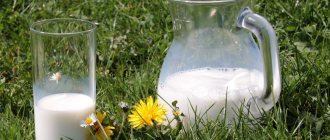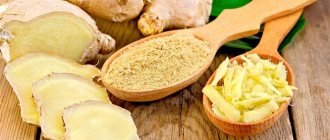Yogurt is considered one of the main dietary products.
Thanks to the presence of bifidobacteria, minerals and vitamins in its composition, it improves the functioning of the stomach and even allows you to get rid of such unpleasant symptoms as heartburn and nausea. Let's talk about how to properly use yogurt for various forms of stomach inflammation.
Gastritis: what is it
Inflammation of the gastric mucosa, leading to disruption of its activity. If gastritis occurs, food is poorly digested. A person feels weakness, loss of strength and energy, and irritability appears. In this case, chronic and acute gastritis with low or high acidity is diagnosed. The disease occurs in the form of inflammation. Chronic gastritis affects the patient's quality of life, leading to flatulence, bloating, heartburn, belching, heaviness, vomiting, constipation or diarrhea, and bad breath. Prolonged gastritis causes stomach and duodenal ulcers and gastrointestinal cancer. That is why it is so important to treat the disease in time and adhere to a special diet. Is it possible to have yogurt for gastritis? A question that interests patients with this problem. Fermented milk products are allowed for gastritis if they have low acidity.
Causes
Gastritis occurs for various reasons, including:
- consumption of low-quality, contaminated food;
- entry into the body of the pathogenic bacterium Helicobacter pylori;
- intoxication, poisoning with chemicals;
- regular and excessive consumption of strong alcohol;
- smoking;
- taking medications;
- dysbacteriosis;
- impaired metabolism;
- stress, neurosis, depression;
- unbalanced diet;
- fatty, salty, spicy, hot foods;
- endocrine diseases;
- heredity.
Poor nutrition, weight loss or weight gain also provoke gastrointestinal problems. For gastritis of any type, yogurt is recommended as the basis of a proper diet.
Is Activia suitable?
The popular drinking yogurt Activia is not suitable for patients with gastritis. This is due to the fact that product manufacturers add a large number of flavors, taste stabilizers, and food additives to it.
All of them provoke an increase in acidity in the body, which means they can cause acute pain, heartburn, and a general deterioration in a person’s condition.
Important : drinking yoghurts like Activia do not have pronounced beneficial properties for humans. They undergo pasteurization, which kills most of the beneficial bacteria in them. Such products can harm even healthy people.
Symptoms
The most common signs of the disease include nausea, vomiting, aching and burning pain in the stomach, which may intensify after eating, lack of appetite, a feeling of heaviness, bloating, dizziness, weakness, irritability, an unpleasant taste in the mouth, heart rhythm disturbances, decreased or increased pressure, fever, sudden weight loss. Yogurt for gastritis in the initial stages can stabilize the patient’s condition. The natural product is quickly absorbed in the stomach, releases all nutrients, does not leave a feeling of heaviness, and heals the intestines.
Treatment
Yogurt for gastritis with high and low acidity is not prohibited, but on the contrary, doctors recommend it for consumption. The main thing is that it is fresh and natural. You should not eat yoghurts with preservatives, dyes, flavors, or additives. If gastritis is caused by poisoning with chemicals and toxins, gastric lavage, drug therapy and a therapeutic diet, which includes natural yogurt, are required. The basis of treatment for gastritis is compliance with the diet prescribed by the doctor; taking medications that normalize the acidity of gastric juice and restore the gastric mucosa; antibacterial therapy.
The diet for acute and chronic gastritis is different, but in both cases it should be gentle. The recommended therapeutic diet for chronic gastritis includes foods such as boiled meat, fish, pasta, cereals, white bread, milk soup, dry biscuits and cookies. Doctors advise not to forget about vegetables, but not to eat them raw, but to boil or steam them. During illness, you are allowed to drink jelly, eat berry mousses, jellies, baked apples, tea with milk, and cocoa.
The therapeutic diet can also include low-fat meat and fish broths, lean meat, herbs, stewed vegetables, and casseroles. Before creating a menu, it is necessary to find out whether the patient can tolerate fermented milk products and whether he has allergies. Natural yogurt is one of the food products that is easily digestible and is maximally rich in vitamins and microelements beneficial for the intestines.
Probiotic yogurt as an additional treatment for H. pylori infection
Ingestion of yogurt containing probiotic cultures reduces the bacterial load of H. pylori, modifies the immune response and intestinal microflora in children infected with H. pylori.
A prospective study was conducted that included 38 children with established H. pylori infection using the urease breath test and 38 children in the control group, identical in gender and age. The results of the study indicate that in the group of infected children, compared to the control group, there were low levels of Bifidobacterium spp. determined in feces (p = 0.009), the ratio of Bifidobacterium spp./E. coli (p=0.04), serum IgA titer (p=0.04), and pepsinogen I/II ratio (p<0.001). Supplementation of probiotic yogurt for 4 weeks in the study group resulted in a decrease in IL-6 levels (p<0.01) and H. pylori bacterial load levels (p=0.046), while serum IgA and pepsinogen II levels increased ( p<0.001). Moreover, yogurt intake resulted in an improvement in the Bifidobacterium spp./E. coli (p=0.03).
The authors conclude that yogurt containing probiotic cultures may have therapeutic success in restoring the normal Bifidobacterium spp./E. Coli and suppression of bacterial contamination by H. pylori.
Comments
The search for alternative treatment regimens for H. pylori infection has been underway for a long time. This is primarily due to problems with patient adherence to eradication therapy, including refusal of drugs or their incorrect use (incomplete course) due to the development of unwanted side effects. This in turn leads to the emergence of therapy-resistant bacterial strains[1].
The use of probiotics has been discussed as adjuvant therapy. According to the latest Maastricht 4 guidelines, the use of probiotics and prebiotics as adjuvant drugs shows promising results in reducing the incidence of side effects (level of evidence 5, grade of recommendation D) [2].
Probiotics can currently be included in various food products, including medications and nutritional supplements, which have a positive effect on the state of microflora. However, there are certain requirements to ensure the clinical effectiveness of industrial probiotics[3]:
- the content of microorganisms in the preparation must be at least 1x10 8 CFU;
- It is unacceptable to include other components not specified in the instructions (yeast, mold, etc.);
- the presence of an individual composition, a specially selected combination of probiotic strains;
- the capsule or shell must ensure the delivery of bacterial cells to the distal parts of the intestine.
Unfortunately, yoghurts containing probiotic cultures do not meet the above requirements. While a competent approach to the use of these drugs requires choosing a high-quality probiotic with proven effectiveness. Among the probiotic preparations, one can highlight FLORASAN preparations, the creation of which took into account all the requirements for probiotic preparations.
Source: Probiotics-Containing Yogurts Suppress Helicobacter pylori Load and Modify Immune Response and Intestinal Microbiota in the Helicobacter pylori-Infected Children Yao-Jong Yang, Bor-Shyang Sheu Helicobacter Volume 17, Issue 4, pages 297–304, August 2012
Literature
- V.V. Tsukanov, O.S. Amelchugova, P.L. Shcherbakov. Modern aspects of Helicobacter pylori eradication “Attending physician” Colloquium 02/10
- Peter Malfertheiner et al, European Helicobacter pylori Study Group. Management of Helicobacter pylori infectiondthe Maastricht IV/ Florence Consensus Report. Gut 2012;61:646e664. doi:10.1136/gutjnl-2012-302084
- E.A. Poluektova. The first probiotic in Russia to successfully pass testing https://www.internist.ru/articles/gastroenterology/gastroenterology_620.html
Diet food
Is it possible to eat yogurt if you have gastritis? Any fermented milk product is useful in this case, except kefir, since it has high acidity. It is best to eat fresh cottage cheese, as well as casseroles made from it, cheesecakes, and dumplings. The diet for gastritis includes the following products:
- Porridge. Oatmeal and buckwheat porridge cooked in milk are a must. It is not recommended to use fast food products.
- Bread. If you have gastritis, you can only eat white bread and crackers. You should not eat rye or freshly baked.
- Potato. It is recommended to eat boiled and mashed potatoes, but not fried.
- Soup. The broth for the soup should be diluted, not strong. It is prepared without seasonings and spices and is consumed warm.
- Meat. Low-fat meats are indicated for gastritis. You cannot eat sausages or sausages.
- Fish. Hake, cod, pollock, pike, and boiled pike perch are allowed. It is better to avoid fried and canned foods.
- Yogurt. For gastritis, food that does not burden the body is the best option. Yogurt is a source of calcium, protein, potassium, vitamin D, and contains probiotics. They strengthen the immune system and have a beneficial effect on the gastrointestinal tract.
The list of permitted products is much longer. Some of them are given.
Best dessert dishes
Homemade yogurt, Greek and low-fat can be used to make a variety of desserts. Patients with gastritis are better off giving preference to fruit salads, mousses, and ice cream. They should be considered in more detail.
Fruit salad
This dish can be included in the daily diet or served at the holiday table. To prepare it you will need a jar of homemade yogurt, apples (non-acidic varieties), oranges, bananas, kiwi. You will need to prepare it like this:
- Wash all the fruits, peel them, and cut out the core of the apples. The fruits should be cut into large pieces or cubes and placed in a fruit bowl.
- Pour honey on top of the fruit or sprinkle with vanilla sugar, pour over yogurt, stir well.
You can serve the dish to the table immediately. Don't wait for the fruit to darken and release its juice.
Homemade ice cream
This dish will please those with a sweet tooth. For it you need to take:
- 500 grams of Greek yogurt;
- 50 grams of honey and glucose;
- 160 grams of sugar;
- 10 pieces of canned apricots;
- 40 grams of butter;
- thyme, vanilla.
To prepare the dish you need:
- Take a pan, pour 180 grams of water, put it on fire. Add sugar, glucose, vanilla. Cook until the mixture has reduced by a third.>
- Next, you need to remove the pan from the heat and mix its contents with yogurt. Whisk all this well, pour into a plastic container and put in the refrigerator.
- Apricots should be placed on a baking sheet, put butter in the pit cavity, pour honey and vanilla. Place thyme on top. Bake for 15-20 minutes at 180 degrees.
Place the finished ice cream in glasses or glasses and garnish with apricots. The dish can be served to the table.
Dessert with biscuit
This dessert is popular in many cafes. It's easy to prepare:
- You need to take a biscuit and break it into small pieces.
- Take several deep glasses, pour yogurt into them one by one, put in a biscuit and any fruit you choose, and pour in yogurt. You can sprinkle a small amount of chocolate chips on top.
The dessert needs to be cooled and served.
Remember that people with gastrointestinal tract problems are not recommended to eat desserts often. You can treat yourself to it once a week.
The benefits of yogurt
Low-fat yogurt for gastritis is included in the mandatory treatment of the disease. It has been proven to help cure gastritis caused by the bacterium Helicobacter pylori. If the disease is accompanied by high acidity, yogurt neutralizes it, reducing the level of acid in the stomach. It is recommended to eat one spoonful of the natural product throughout the day. It is obtained by fermenting milk with a starter that contains live bacteria. Microorganisms found in sourdough (probiotics) improve digestion and prevent gastrointestinal diseases. One cup of natural yogurt contains nutrients such as calcium, iodine, phosphorus, vitamins B12, B2, zinc, protein, potassium.
- Yogurt is quickly digested.
- Heals the intestines.
- Promotes nutrient absorption.
- Strengthens the immune system.
- Restores the body after intestinal infections.
- Reduces cholesterol.
- It is a source of protein and calcium.
For gastritis, it is better to eat natural yogurt. It is lower in calories, contains more proteins, calcium, and does not contain sugar. The product cannot be frozen, but can be refrigerated.
Cook at home!
This product is recommended for patients with all forms of gastritis during remission. It can be prepared from low-fat milk or a special yogurt starter. You can use beet or cane sugar as a sweetener. Diabetics are better off using a natural sweetener or bee honey instead.
To prepare yogurt, it is better to use a special
yogurt maker or multicooker .
To get a natural product, you need to prepare sterilized jars, mix all the ingredients according to the recipe you have chosen, pour the finished mixture into containers and leave it to ferment overnight.
As a rule, 7-8 hours are enough to completely cook the product.
Contraindications
Is it possible to eat yogurt if you have gastritis? This fermented milk product has a low acidity level. It should not be used for gastritis if:
- The disease is in the acute stage.
- Expired yogurt.
- The product has a high fat content, and the composition contains added dyes, flavors, and other ingredients (for example, chocolate, pieces of fruit, berry puree).
- The patient has lactose intolerance.
So, we talked about the symptoms and treatment of gastritis, as well as the correct use of yogurt (kefir, cottage cheese) for this disease.
What is best to combine with
Patients with gastrointestinal disorders are recommended to consume yogurt for breakfast or an afternoon snack. Since it is recommended to limit the volume of fermented milk product, it is better to eat it this way:
- with liquid porridges - oatmeal, buckwheat;
- as a dressing for fruit and berry salads;
- with cottage cheese casseroles.
To satisfy your hunger at work before a full lunch, you can eat 2-3 spoons of yogurt without any additives.
To avoid health problems, in the first days after completing the general course of treatment for gastritis, observe how your stomach reacts to a particular food product. If after eating yogurt you experience unpleasant symptoms, nausea, bloating, heartburn, exclude it from your diet. If there are no such symptoms, you can slowly increase the amount of fermented milk food.










